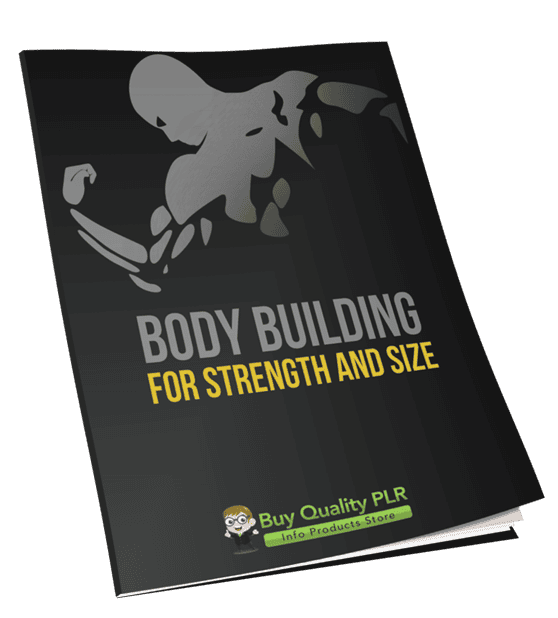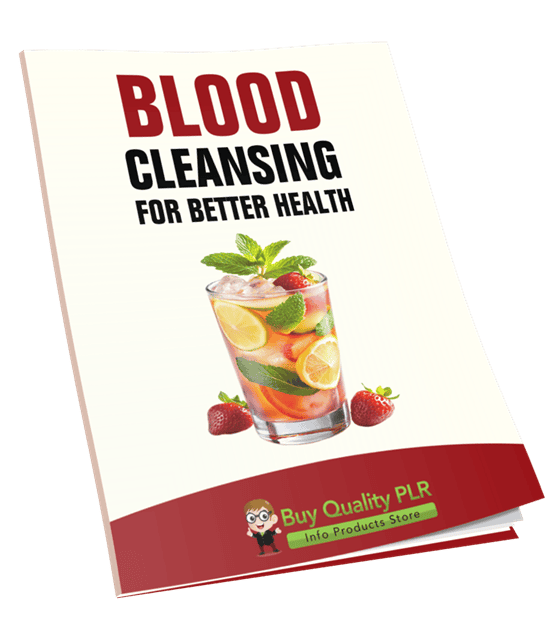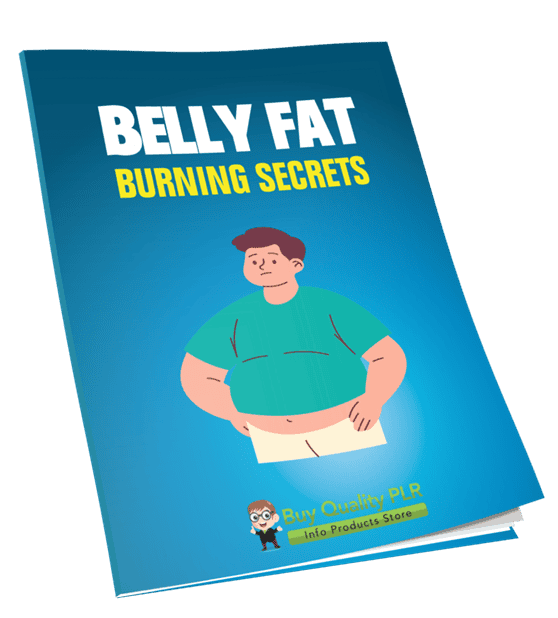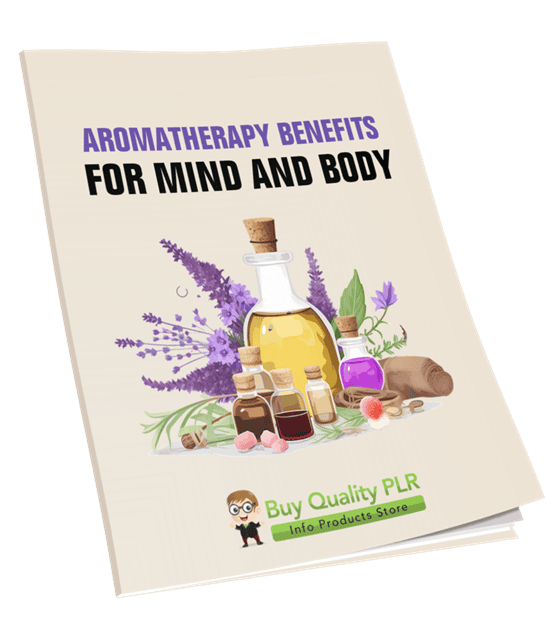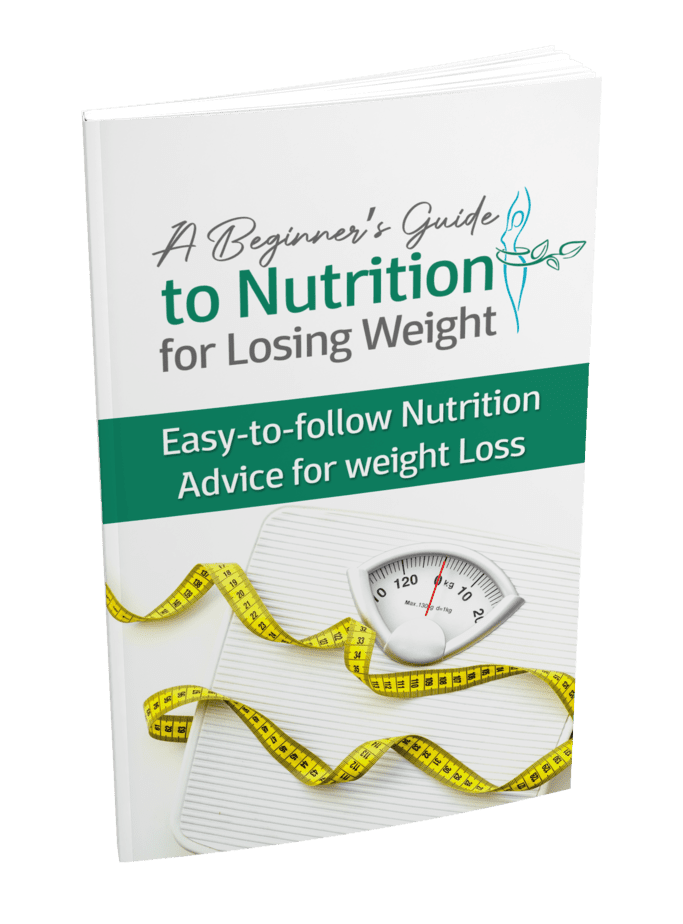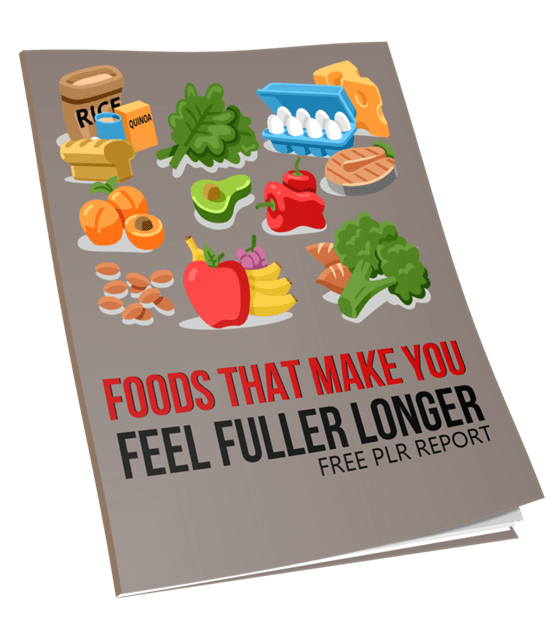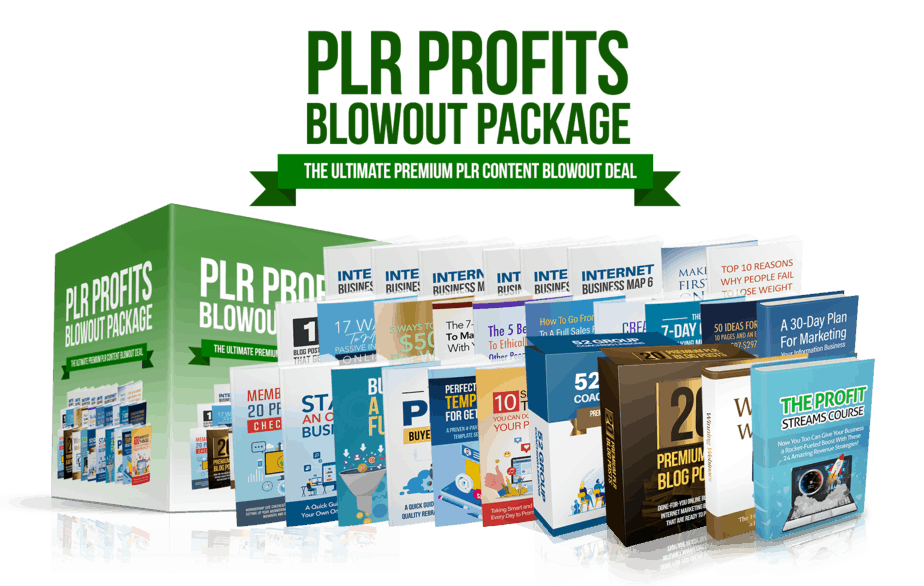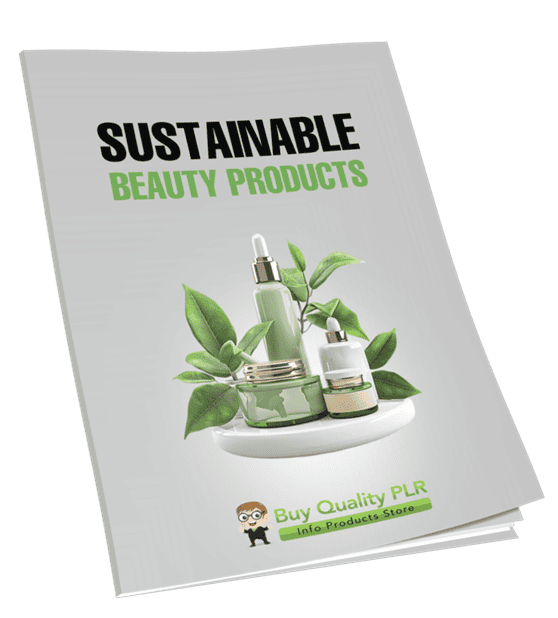
Sustainable Beauty Products PLR Course 22k Words
in Beauty PLR , PLR Checklists , PLR eBooks , PLR eCourses , PLR List Building Reports , Premium PLR , Premium PLR eBooks , Premium PLR Reports , Premium White Label Brandable PLR Coaching Courses , Private Label Rights ProductsChoose Your Desired Option(s)
has been added to your cart!
have been added to your cart!
#sustainablebeauty #ecofriendly #greenskincare #beautymarketing #plrcontent #naturalbeauty #wellnessbusiness #plrcourse
Sustainable Beauty Products PLR Course – Build an Eco-Friendly Beauty Brand & Lifestyle
Sustainable Beauty Products – A Step-by-Step Guide to Eco-Friendly Beauty
Discover how to create, promote, and use sustainable beauty products with our Sustainable Beauty Products PLR Course. This comprehensive PLR package is perfect for entrepreneurs, content creators, bloggers, coaches, and educators who want to offer valuable resources in the growing eco-friendly beauty niche.
With over 20,190 words of expertly crafted content, this course teaches your audience to understand sustainable beauty, select the right products, create DIY natural cosmetics, and build a routine that’s kind to both their body and the planet.
Whether you want to sell the course as is, convert it into eBooks, workshops, memberships, or videos, this PLR package gives you everything you need to launch quickly and profit from a high-demand, evergreen niche.
Presenting…
Sustainable Beauty Products PLR Course 22k Words
Why Sustainable Beauty Matters
Traditional beauty products often come with hidden costs: harmful chemicals, excessive packaging, animal testing, and a high environmental footprint. Consumers are increasingly demanding products that are safe for the body, ethical, and sustainable.
Sustainable beauty is more than a trend—it’s a movement. This course empowers your audience to:
- Identify eco-friendly products and avoid harmful chemicals
- Create DIY natural beauty products at home
- Reduce waste and adopt sustainable packaging solutions
- Build a beauty routine that is good for themselves and the planet
By providing this course to your audience, you help them make informed choices while tapping into a lucrative and growing market.
Course Overview
The Sustainable Beauty Products PLR Course is organized into 5 detailed modules, each with 4 actionable steps, making it simple for learners to follow and implement.
Module 1: Understanding Sustainable Beauty
Objective: Lay the foundation by understanding what makes beauty products sustainable and why it matters.
- Step 1: What is Sustainable Beauty?
Learn the principles of sustainable beauty—from ethical sourcing to biodegradable packaging—and why these choices matter. - Step 2: Why Sustainable Beauty Matters
Discover the impact of conventional beauty products on the environment, human health, and global ecosystems. Learn how even small changes can make a big difference. - Step 3: Key Ingredients to Look For (And Avoid!)
Identify eco-friendly ingredients and avoid harmful chemicals like parabens, sulfates, and microplastics. - Step 4: How to Read Product Labels Like a Pro
Understand certifications (cruelty-free, organic, fair trade) and decode misleading marketing terms to make informed choices.
By the end of this module, your audience will understand how to select products that are safe, effective, and environmentally responsible.
Module 2: Finding and Choosing Sustainable Beauty Products
Objective: Help learners make smart, conscious product choices.
- Step 1: Where to Shop for Sustainable Beauty
Explore eco-conscious brands, zero-waste stores, and online marketplaces. Learn to prioritize companies that focus on sustainability, fair trade, and transparency. - Step 2: Decoding Marketing Terms (“Greenwashing” Alert!)
Learn how to spot deceptive eco-friendly claims and avoid “greenwashing” while choosing authentic sustainable products. - Step 3: Sustainable Packaging – What to Look For
Understand the importance of biodegradable, recyclable, and refillable packaging. - Step 4: DIY Beauty vs. Store-Bought – What’s More Sustainable?
Compare benefits of making your own products at home with buying from ethical brands to help consumers make informed decisions.
This module provides actionable insights so learners can shop responsibly and reduce their ecological footprint.
Module 3: DIY Sustainable Beauty – Make Your Own!
Objective: Teach practical, hands-on ways to create natural beauty products.
- Step 1: DIY Face Masks Using Natural Ingredients
Learn easy recipes using honey, oats, turmeric, and other natural ingredients for glowing skin. - Step 2: Making Your Own Chemical-Free Hair Care
Create shampoos, conditioners, and hair masks without harmful chemicals. - Step 3: Simple DIY Body Scrubs and Lotions
Mix coconut oil, sugar, and essential oils to create exfoliants and moisturizers. - Step 4: Zero-Waste Makeup Alternatives
Learn to make natural lip stains, eyeshadows, and bronzers using simple ingredients like beetroot powder and cocoa.
By the end of this module, learners can create their own eco-friendly beauty products that are safe, sustainable, and effective.
Module 4: Building a Sustainable Beauty Routine
Objective: Integrate sustainable practices into a daily beauty routine.
- Step 1: How to Transition to a Sustainable Beauty Routine
Replace conventional products gradually with sustainable alternatives without overwhelming your routine. - Step 2: Reducing Beauty Waste – Tips & Tricks
Explore refillable options, recycling programs, and ways to minimize packaging waste. - Step 3: Sustainable Skincare – The Essentials
Tailor routines for different skin types while focusing on eco-friendly ingredients and products. - Step 4: Hair & Makeup Sustainability Hacks
Extend product life, reduce waste, and make mindful choices for hair and makeup routines.
This module ensures learners can maintain their sustainable practices consistently and see real benefits.
Module 5: Spreading the Sustainable Beauty Movement
Objective: Inspire learners to advocate for sustainable beauty and influence others.
- Step 1: Supporting Ethical Beauty Brands
Identify brands that prioritize fair trade, sustainability, and animal welfare. - Step 2: How to Share Your Sustainable Beauty Journey
Tips for sharing your eco-friendly practices on social media or within your community. - Step 3: Hosting a Sustainable Beauty Swap
Organize events to exchange eco-friendly products and educate friends or customers. - Step 4: Continuing Your Sustainability Journey
Resources and strategies for lifelong learning in sustainable beauty, including workshops, books, and online communities.
By completing this module, learners are empowered to influence others and amplify their impact on sustainability.
Additional Materials Included
- Sustainable Beauty Products – Checklist (925 words): A quick-reference guide to eco-friendly practices for daily use.
- Sustainable Beauty Products – FAQs (1,135 words): Answers to common questions about sustainable beauty and DIY practices.
- Sustainable Beauty Products – Salespage (649 words): Ready-to-use marketing content to launch the course immediately.
These extras save time and allow instant product deployment.
Why This PLR Course is Perfect for You
- Comprehensive Content: 20,190 words of professionally written material.
- Editable & Brandable: Rebrand and customize content for your audience.
- Evergreen Niche: Sustainable beauty is growing rapidly and appeals to eco-conscious consumers.
- Multiple Formats: Turn into digital courses, workshops, eBooks, videos, or membership content.
- Instant Launch: Pre-written modules, checklist, FAQs, and salespage included.
This PLR course allows you to position yourself as a leader in the sustainable beauty niche while offering tangible, actionable guidance to your audience.
How to Use and Profit from the Course
- Sell as a Complete Digital Course
Offer on platforms like Teachable, Kajabi, or Thinkific. - Create Standalone Guides or Reports
Sell individual modules as niche reports or mini-courses ($10–$20 each). - Bundle with Other PLR Products
Create premium packages ($47–$97) with related courses on eco-lifestyle, wellness, or DIY beauty. - Membership Site Content
Use modules to provide recurring content for monthly subscriptions. - Convert to Multimedia
Transform the course into videos, audio lessons, or interactive PDFs. - Lead Magnets or Email Campaigns
Use chapters or tips as free resources to grow your email list. - Flip or Rebrand
Create a niche site or brand using the PLR, then sell it as a complete digital product.
The possibilities are limitless. With this course, you have a ready-to-go product in a highly desirable niche.
License Terms
Permissions:
- Edit, rebrand, and sell as your own.
- Convert to video, audio, or membership content.
- Break into individual modules for separate offers.
Restrictions:
- Cannot transfer PLR rights to customers.
- Cannot give away the full course in original form for free.
- Maximum affiliate commission: 75%.
Take Action Today!
The Sustainable Beauty Products PLR Course provides everything you need to:
- Educate an eco-conscious audience
- Create a profitable digital product in an evergreen niche
- Save time and effort with pre-written, ready-to-publish content
Next Steps:
- Download the PLR package instantly.
- Customize, rebrand, and package it for your audience.
- Launch as a course, eBook, workshop, or membership offering.
Empower your audience to live beautifully and sustainably while building a profitable business for yourself. 🌱💄
has been added to your cart!
have been added to your cart!
Here A Sample of Sustainable Beauty Products PLR Course
Module 1: Understanding Sustainable Beauty
Let’s start with the basics! In this module, we’ll explore what sustainable beauty really means and why it matters.
Step 1: What is Sustainable Beauty?
Learn what makes a beauty product sustainable, from ethical sourcing to biodegradable packaging.
Introduction
Sustainable beauty is more than just a trend—it is a movement that promotes environmentally friendly, ethical, and socially responsible practices in the beauty industry. As consumers become more conscious of their impact on the planet, the demand for sustainable beauty products continues to grow.
In this step, you will learn:
- The core principles of sustainable beauty
- What makes a beauty product truly sustainable
- The importance of ethical sourcing
- The role of biodegradable and recyclable packaging
By the end of this step, you will be able to identify sustainable beauty products and understand how they contribute to a healthier planet.
1. Core Principles of Sustainable Beauty
Sustainable beauty revolves around three key pillars:
a) Environmental Sustainability
Sustainable beauty products are designed to minimize environmental harm. This includes:
- Reducing carbon footprint – Brands use renewable energy, efficient production processes, and lower emissions.
- Minimizing waste – Companies focus on zero-waste production, biodegradable packaging, and refillable products.
- Protecting biodiversity – Ethical ingredient sourcing ensures natural habitats are not destroyed.
b) Ethical and Social Responsibility
Sustainable beauty supports fair labor practices and ensures that workers throughout the supply chain are treated with respect and paid fairly. Ethical beauty brands:
- Avoid child labor and unfair wages
- Support fair trade and local communities
- Promote diversity and inclusivity in their workforce and marketing
c) Health and Safety for Consumers
Sustainable beauty prioritizes safe, non-toxic ingredients that do not harm human health. This includes:
- Avoiding harsh chemicals such as parabens, sulfates, and synthetic fragrances
- Using natural, organic, and non-toxic ingredients
- Ensuring products are dermatologically tested and cruelty-free
2. What Makes a Beauty Product Sustainable?
For a product to be considered sustainable, it must meet specific environmental, ethical, and safety criteria. Below are key factors that define a sustainable beauty product:
a) Sustainable Ingredients
The ingredients in a beauty product play a major role in its sustainability. Sustainable ingredients are:
- Natural and organic – Derived from plants, minerals, or other renewable sources without synthetic additives.
- Ethically sourced – Harvested without harming ecosystems, using fair trade principles.
- Non-toxic – Free from harmful chemicals like phthalates, artificial dyes, and synthetic preservatives.
- Biodegradable – Breaks down naturally without polluting water sources or harming marine life.
Some common sustainable beauty ingredients include:
- Aloe vera
- Coconut oil
- Shea butter (from fair-trade sources)
- Bamboo extract
- Essential oils (ethically sourced)
b) Cruelty-Free and Vegan Formulations
Sustainable beauty brands avoid animal testing and offer cruelty-free products. Many also provide vegan options, meaning they contain no animal-derived ingredients. Look for certifications such as:
- Leaping Bunny Certified – International standard for cruelty-free products.
- PETA Certified – Ensures products are not tested on animals.
- Vegan Society Approved – Confirms products do not contain any animal by-products.
c) Eco-Friendly Production Methods
Sustainable beauty brands implement eco-friendly manufacturing processes to reduce environmental impact. These methods include:
- Water conservation – Using minimal water during production and utilizing waterless formulas.
- Renewable energy sources – Factories powered by solar, wind, or hydroelectric energy.
- Carbon-neutral operations – Offsetting carbon emissions through reforestation and sustainability initiatives.
d) Minimal and Sustainable Packaging
Packaging is a major environmental concern in the beauty industry. Sustainable packaging is:
- Biodegradable – Made from natural materials that break down without leaving toxic residues (e.g., cornstarch, bamboo, or sugarcane pulp).
- Recyclable – Uses materials like glass, aluminum, and paper that can be reprocessed and reused.
- Refillable – Allows customers to reuse the same container, reducing plastic waste.
- Plastic-free or reduced plastic – Uses alternatives like plant-based or compostable packaging.
Certifications to look for:
- FSC (Forest Stewardship Council) – Ensures paper and wood-based packaging come from responsibly managed forests.
- EcoCert – Certifies organic and environmentally friendly cosmetics.
3. The Importance of Ethical Sourcing
Sourcing ingredients responsibly is a crucial part of sustainable beauty. Ethical sourcing ensures that:
- Ingredients are harvested without harming local communities
- Workers are paid fair wages and provided safe working conditions
- Deforestation and habitat destruction are minimized
Examples of Ethical Sourcing Initiatives:
- Fair Trade Shea Butter – Sourced from women’s cooperatives in Africa, ensuring fair wages and community support.
- Sustainable Palm Oil – Certified by the RSPO (Roundtable on Sustainable Palm Oil) to prevent deforestation.
- Regenerative Farming – A method that restores soil health, improves biodiversity, and captures carbon from the atmosphere.
Many beauty brands partner with farmers and local communities to ensure ethical ingredient sourcing while providing economic benefits to those involved.
4. How to Identify Sustainable Beauty Products
With so many products on the market, how can you tell if a beauty product is truly sustainable? Follow these guidelines:
a) Check Certifications
Look for official sustainability certifications such as:
- USDA Organic – Confirms that ingredients are grown without synthetic pesticides or fertilizers.
- COSMOS Organic – Certifies that products meet organic and natural cosmetics standards.
- Fair Trade Certified – Ensures ethical labor practices and fair wages.
- Cradle to Cradle Certified – Evaluates products for sustainability in terms of materials, production, and recycling.
b) Read the Ingredients List
- Avoid synthetic fragrances, parabens, sulfates, phthalates, and microplastics.
- Choose natural, organic, biodegradable ingredients whenever possible.
c) Examine the Packaging
- Look for minimal, recyclable, or biodegradable packaging.
- Avoid products with excess plastic or single-use containers.
d) Research the Brand’s Sustainability Policies
- Visit the company’s website to check their sustainability commitments.
- Look for transparency in ingredient sourcing and environmental impact.
Conclusion
Understanding what makes a beauty product sustainable is the first step toward making informed and responsible choices. By focusing on eco-friendly ingredients, ethical sourcing, cruelty-free formulations, and sustainable packaging, you can reduce your impact on the environment while supporting brands that prioritize sustainability.
In the next step, we will explore why sustainable beauty matters and how traditional beauty products affect the environment and human health.
Step 2: Why Sustainable Beauty Matters
Discover the impact of traditional beauty products on the environment and how small changes can make a big difference.
Introduction
The beauty industry has long been associated with glamour, self-care, and personal expression. However, behind the scenes, the production and disposal of beauty products have significant environmental and social consequences. Many conventional beauty products contribute to pollution, deforestation, and even health risks due to toxic ingredients.
Understanding why sustainable beauty matters is essential for making informed choices that benefit both people and the planet. In this step, we will explore:
- The environmental impact of traditional beauty products
- How beauty products affect human health
- The ethical and social consequences of the beauty industry
- Simple changes to make beauty routines more sustainable
By the end of this step, you will have a clear understanding of why adopting sustainable beauty practices is crucial and how small, everyday changes can create a positive impact.
1. The Environmental Impact of Traditional Beauty Products
Traditional beauty products often rely on unsustainable ingredients, excessive packaging, and harmful production methods. These factors contribute to environmental degradation in several ways:
a) Plastic Pollution from Beauty Packaging
- The beauty industry produces over 120 billion units of packaging every year, much of which is single-use plastic.
- Plastic takes hundreds of years to decompose, and much of it ends up in landfills, rivers, and oceans.
- Microplastics from exfoliating scrubs, toothpaste, and synthetic ingredients wash into waterways, polluting marine ecosystems and harming marine life.
✅ Sustainable Alternative: Look for brands that use recyclable, refillable, biodegradable, or plastic-free packaging.
b) Harmful Chemical Waste in Waterways
- Many conventional beauty products contain toxic chemicals such as parabens, sulfates, and synthetic fragrances that pollute rivers and oceans when washed down the drain.
- Sunscreens containing oxybenzone and octinoxate have been linked to coral reef bleaching, leading to bans on these chemicals in several countries.
✅ Sustainable Alternative: Choose reef-safe sunscreens and products with natural, biodegradable ingredients.
c) Deforestation and Biodiversity Loss
- The beauty industry relies on palm oil, a major contributor to deforestation in Indonesia and Malaysia, threatening species such as orangutans and tigers.
- Unregulated sourcing of ingredients like shea butter, mica, and sandalwood often results in habitat destruction and loss of biodiversity.
✅ Sustainable Alternative: Look for products with RSPO-certified palm oil or brands committed to sustainable ingredient sourcing.
d) Carbon Footprint from Beauty Product Manufacturing
- Many beauty products require energy-intensive production processes, contributing to greenhouse gas emissions.
- The transportation of raw materials and finished products worldwide increases carbon footprints.
✅ Sustainable Alternative: Support carbon-neutral beauty brands that offset emissions through reforestation projects and renewable energy initiatives.
2. How Beauty Products Affect Human Health
Many conventional beauty products contain harsh chemicals that can negatively impact human health. These ingredients are often used to extend shelf life, enhance fragrance, or improve texture, but they may pose long-term risks.
a) Harmful Chemicals in Conventional Beauty Products
Some common toxic ingredients include:
- Parabens – Used as preservatives but linked to hormonal disruption and potential health risks.
- Phthalates – Found in synthetic fragrances and linked to reproductive health issues.
- Sodium Lauryl Sulfate (SLS) – A foaming agent that can cause skin irritation and allergies.
- Heavy Metals (Lead, Mercury, Arsenic) – Found in some lipsticks and eyeliners, accumulating in the body over time.
✅ Sustainable Alternative: Use clean beauty products that are paraben-free, sulfate-free, and fragrance-free.
b) Skin Sensitivity and Allergic Reactions
- Many synthetic ingredients strip the skin of natural oils, leading to dryness, irritation, and breakouts.
- Some people experience allergic reactions to artificial dyes and preservatives in cosmetics.
✅ Sustainable Alternative: Choose natural and organic products with gentle, plant-based ingredients.
c) Impact on Respiratory Health
- Aerosol sprays (hairsprays, deodorants, and dry shampoos) release volatile organic compounds (VOCs) that pollute indoor air quality and may trigger asthma or respiratory issues.
✅ Sustainable Alternative: Opt for non-aerosol, eco-friendly beauty alternatives.
3. Ethical and Social Consequences of the Beauty Industry
The beauty industry is not only an environmental concern—it also raises ethical issues regarding labor practices, animal testing, and corporate responsibility.
a) Exploitative Labor Practices in Ingredient Sourcing
- Many beauty ingredients are sourced in developing countries where labor exploitation is common.
- The mica mining industry (used in highlighters and eyeshadows) has been linked to child labor in India and Madagascar.
✅ Sustainable Alternative: Choose products with Fair Trade Certified ingredients to support ethical labor practices.
b) Animal Testing and Cruelty-Free Beauty
- Millions of animals (rabbits, guinea pigs, and mice) suffer in cosmetic testing worldwide.
- Many countries still allow painful and unnecessary animal testing despite advancements in cruelty-free alternatives.
✅ Sustainable Alternative: Look for Leaping Bunny Certified and PETA-approved cruelty-free products.
c) Greenwashing in the Beauty Industry
- Some brands mislead consumers by falsely claiming their products are “natural” or “eco-friendly” without any certifications.
- “Organic” and “vegan” labels can be misused without regulatory oversight.
✅ Sustainable Alternative: Verify claims with official sustainability certifications like USDA Organic, COSMOS, or EcoCert.
4. Small Changes That Make a Big Difference
Transitioning to sustainable beauty does not require a complete overhaul of your routine. Here are some easy, impactful changes you can start today:
a) Choose Refillable or Zero-Waste Packaging
- Switch to solid shampoo bars instead of bottled shampoos.
- Use refillable beauty products for skincare and makeup.
- Recycle or upcycle packaging whenever possible.
b) Buy Fewer, High-Quality Products
- Invest in multi-purpose beauty products (e.g., tinted moisturizers instead of separate foundation and SPF).
- Support brands that use minimal and ethical packaging.
c) Read Ingredient Lists and Certifications
- Check for paraben-free, sulfate-free, and cruelty-free labels.
- Look for organic and fair-trade certifications.
d) Support Sustainable Beauty Brands
- Research companies with transparent sustainability policies.
- Choose brands that give back to the environment through reforestation or carbon offset programs.
Conclusion
Understanding why sustainable beauty matters is key to making conscious choices that benefit both the planet and personal health. By recognizing the negative impacts of traditional beauty products, we can take meaningful steps toward a more ethical and eco-friendly beauty routine.
Next Step: In the following lesson, we will explore how to transition to a sustainable beauty routine, providing practical tips for adopting greener habits without compromising on quality or effectiveness.
Step 3: Key Ingredients to Look For (And Avoid!)
Identify eco-friendly ingredients and harmful chemicals that should be avoided in beauty products.
Introduction
When choosing beauty products, understanding the ingredients list is one of the most powerful steps toward sustainability. Many conventional products contain toxic chemicals, synthetic additives, and environmentally harmful substances that can harm your skin, health, and the planet.
In contrast, sustainable beauty brands focus on natural, organic, biodegradable, and ethically sourced ingredients that are safe for both consumers and ecosystems.
In this step, we will explore:
- Eco-friendly ingredients that nourish the skin and support sustainability
- Harmful chemicals to avoid due to their negative environmental and health effects
- How to read beauty product labels to make informed choices
- Certifications and third-party verifications to ensure ingredient safety
By the end of this lesson, you will be able to identify clean, sustainable ingredients and confidently avoid harmful substances in beauty products.
1. Eco-Friendly Ingredients to Look For
Sustainable beauty products prioritize natural, biodegradable, non-toxic, and ethically sourced ingredients. Here are some key ingredients that are both safe for human health and beneficial for the environment:
a) Plant-Based Oils and Butters
Natural oils and butters are deeply nourishing, biodegradable, and sustainably sourced.
- Shea Butter – A rich moisturizer sourced from the shea tree; opt for Fair Trade Certified versions.
- Coconut Oil – A versatile ingredient used in skincare and hair care; best when organic and sustainably harvested.
- Argan Oil – High in antioxidants and known for its hydrating properties; look for ethically sourced Moroccan argan oil.
- Jojoba Oil – Closely resembles the skin’s natural sebum, making it an excellent sustainable moisturizer.
✅ Why These Are Sustainable: They come from renewable plant sources, are biodegradable, and don’t introduce toxic chemicals into ecosystems.
b) Natural Exfoliants and Scrubs
Many conventional scrubs contain plastic microbeads that pollute oceans and harm marine life. Instead, look for biodegradable exfoliants such as:
- Ground Coffee Beans
- Oatmeal
- Sugar and Sea Salt
- Crushed Walnut Shells (Finely Ground)
✅ Why These Are Sustainable: Unlike plastic microbeads, these natural exfoliants break down easily in the environment.
c) Botanical Extracts and Herbal Ingredients
Many sustainable beauty brands harness the power of botanical extracts for their antioxidant and healing properties. Some excellent choices include:
- Aloe Vera – Soothes and hydrates the skin.
- Green Tea Extract – Rich in antioxidants that combat free radical damage.
- Chamomile – Calms irritation and redness.
- Rosehip Oil – Known for its anti-aging properties and sustainable harvesting.
✅ Why These Are Sustainable: Sourced from renewable plant extracts, free from synthetic processing, and biodegradable.
d) Natural Preservatives
Preservatives prevent mold and bacterial growth in beauty products, but many conventional ones contain toxic chemicals. Natural alternatives include:
- Vitamin E (Tocopherol) – Extends shelf life while being skin-friendly.
- Rosemary Extract – A natural antioxidant that protects oils from oxidation.
- Grapefruit Seed Extract – Used in natural skincare formulations.
✅ Why These Are Sustainable: These natural preservatives are non-toxic and eco-friendly, unlike synthetic preservatives that contribute to water pollution.
2. Harmful Chemicals to Avoid
Many conventional beauty products contain toxic chemicals that can harm human health, pollute waterways, and disrupt ecosystems. Below are some of the worst offenders:
a) Parabens (Methylparaben, Propylparaben, Butylparaben, etc.)
Used as preservatives in skincare and makeup, parabens can:
❌ Disrupt hormones and mimic estrogen in the body.
❌ Contribute to water pollution when washed off.
❌ Be detected in marine life and human tissue.
✅ Safe Alternative: Look for paraben-free beauty products or those preserved with Vitamin E.
b) Sulfates (Sodium Lauryl Sulfate – SLS, Sodium Laureth Sulfate – SLES)
Used in shampoos, cleansers, and toothpaste for foaming action, sulfates can:
❌ Strip natural oils from skin and hair, causing dryness.
❌ Irritate sensitive skin and eyes.
❌ Pollute waterways and harm aquatic life.
✅ Safe Alternative: Choose sulfate-free shampoos and cleansers made with coconut-derived surfactants.
c) Synthetic Fragrances (Parfum, Fragrance, etc.)
Artificial fragrances often contain hundreds of unregulated chemicals, including:
❌ Phthalates, which are linked to hormone disruption.
❌ Allergens that trigger asthma and skin irritation.
❌ Environmental pollutants that affect air and water quality.
✅ Safe Alternative: Choose essential oil-based fragrances or fragrance-free products.
d) Formaldehyde and Formaldehyde-Releasing Preservatives
Found in some nail polishes, hair treatments, and skincare products, formaldehyde is:
❌ A known carcinogen linked to cancer risk.
❌ An irritant to the skin, eyes, and respiratory system.
❌ Toxic to aquatic ecosystems.
✅ Safe Alternative: Choose formaldehyde-free nail polishes and keratin treatments.
e) Oxybenzone and Octinoxate (Common in Sunscreens)
Used in chemical sunscreens, these ingredients can:
❌ Cause coral reef bleaching and marine ecosystem damage.
❌ Be absorbed into the bloodstream, leading to hormonal disruption.
✅ Safe Alternative: Use reef-safe mineral sunscreens with zinc oxide or titanium dioxide.
3. How to Read Beauty Product Labels
Many brands use marketing tricks to make their products seem sustainable when they are not. Here’s how to spot clean beauty products:
✅ Look for ingredient transparency – Avoid vague terms like “fragrance” or “parfum.”
✅ Check for third-party certifications like USDA Organic, COSMOS, EcoCert, Leaping Bunny (Cruelty-Free), or Fair Trade.
✅ Read the first five ingredients – The first few ingredients make up the bulk of the product. Avoid those with sulfates, parabens, or synthetic preservatives listed at the top.
4. Certifications and Third-Party Verifications
To ensure a beauty product meets sustainability and ethical standards, look for these trusted certifications:
- USDA Organic – Guarantees at least 95% organic ingredients.
- COSMOS Organic – A European standard for organic and natural cosmetics.
- Leaping Bunny / PETA Cruelty-Free – Verifies that a product was not tested on animals.
- Fair Trade Certified – Ensures ethical sourcing of ingredients like shea butter, cocoa, and argan oil.
- ECOCERT – Certifies natural and organic beauty products.
Conclusion
By learning to identify eco-friendly ingredients and avoid harmful chemicals, you can make more sustainable, ethical, and health-conscious beauty choices.
Step 4: How to Read Product Labels Like a Pro
Get familiar with sustainable certifications (like cruelty-free, organic, and fair trade) and learn how to decode misleading marketing terms.
Introduction
With so many beauty products on the market claiming to be “natural,” “eco-friendly,” or “organic,” it can be challenging to separate fact from marketing hype. Many brands use misleading terms to appear sustainable when they may still contain harmful ingredients, be tested on animals, or contribute to environmental damage.
In this step, we will cover:
- How to identify sustainable certifications and what they mean.
- How to spot misleading marketing claims (also known as “greenwashing”).
- How to analyze ingredient lists to ensure the product aligns with sustainable standards.
- Key red flags that indicate a product may not be as sustainable as it seems.
By the end of this lesson, you will be able to confidently evaluate beauty product labels, ensuring that your choices support sustainability, ethical sourcing, and personal health.
1. Sustainable Beauty Certifications and What They Mean
Third-party certifications are one of the most reliable ways to determine if a product truly meets sustainable and ethical standards. Each certification focuses on specific areas, such as cruelty-free testing, organic ingredients, fair trade sourcing, and eco-friendly packaging.
Here are the most important sustainability certifications to look for:
a) Cruelty-Free Certifications
These certifications indicate that no animal testing was used in the development of the product.
- Leaping Bunny – One of the most rigorous cruelty-free standards, ensuring no animal testing at any stage of production.
- PETA’s Beauty Without Bunnies – A certification that guarantees products and ingredients are not tested on animals.
- Cruelty-Free International – Recognized globally as a symbol of ethical beauty.
✅ Why This Matters: Many conventional beauty brands still test on animals, causing unnecessary harm. These certifications ensure that your beauty products are developed ethically and humanely.
b) Organic and Natural Certifications
These indicate that products contain natural and organic ingredients without harmful synthetic chemicals.
- USDA Organic – Requires at least 95% organic ingredients for certification.
- COSMOS Organic (Europe) – A European certification ensuring at least 20% organic ingredients in leave-on products and 10% in rinse-off products.
- ECOCERT – Verifies that a product contains a high percentage of natural and organic ingredients and is produced in an eco-friendly way.
✅ Why This Matters: Many brands use “organic” or “natural” claims even if their products contain synthetic preservatives or chemical additives. These certifications ensure true organic integrity.
c) Fair Trade Certifications
These certifications ensure ethical sourcing of raw materials, particularly ingredients like cocoa, shea butter, coconut oil, and argan oil.
- Fair Trade Certified – Guarantees fair wages and ethical working conditions for farmers and workers.
- Rainforest Alliance Certified – Focuses on sustainable farming practices and protecting biodiversity.
✅ Why This Matters: Many ingredients in beauty products are sourced from developing countries, where workers may be exploited. Fair trade certifications ensure that workers are paid fairly and operate in safe conditions.
d) Sustainable Packaging Certifications
These indicate that the product’s packaging meets high environmental standards.
- FSC (Forest Stewardship Council) – Ensures that paper and wood-based packaging comes from sustainably managed forests.
- How2Recycle Label – A clear guide that shows consumers how to properly recycle the packaging.
- Plastic-Free Certified – Ensures that no plastic components are used in the product packaging.
✅ Why This Matters: Excessive plastic waste is a major environmental issue. Choosing products with sustainable packaging reduces your carbon footprint.
2. How to Spot Misleading Marketing Claims (Greenwashing)
Greenwashing is a deceptive marketing strategy where brands use misleading terms to make their products seem more sustainable than they actually are. Many beauty products appear eco-friendly based on branding and buzzwords—but their ingredient lists and company practices tell a different story.
Common Greenwashing Terms to Watch Out For
❌ “All Natural” – This term is not regulated, meaning a product can contain synthetic chemicals and still claim to be “natural.”
✅ Instead, check the ingredient list for organic, plant-based extracts without artificial additives.
❌ “Non-Toxic” – This term has no standardized definition and does not guarantee a product is free from harmful chemicals.
✅ Instead, verify the absence of parabens, sulfates, and synthetic preservatives.
❌ “Dermatologist Approved” – This phrase does not indicate third-party testing and can be used without proof.
✅ Instead, look for official dermatology seals or clinical study references.
❌ “Eco-Friendly” – This is a vague term with no specific regulatory meaning.
✅ Instead, check for sustainability certifications like ECOCERT, FSC, or Plastic-Free Certified.
❌ “Chemical-Free” – This is misleading because everything, including water, is a chemical.
✅ Instead, ensure the product is free from synthetic chemicals and harmful additives.
3. How to Analyze Ingredient Lists Like a Pro
Even if a product has eco-friendly packaging and sustainability claims, the ingredients list is where you find the truth. Here’s how to break it down:
Step 1: Read the First Five Ingredients
- The first five ingredients make up the majority of the formula.
- If the product claims to be “natural” but has synthetic ingredients in the first five, it’s likely misleading marketing.
Step 2: Avoid Common Toxic Ingredients
Look out for harmful substances, including:
❌ Parabens (Methylparaben, Propylparaben) – Linked to hormone disruption.
❌ Sulfates (SLS, SLES) – Harsh detergents that strip natural oils.
❌ Synthetic Fragrances – Can contain hundreds of unregulated chemicals.
❌ Phthalates – Used in fragrance, linked to reproductive issues.
❌ Triclosan – An antibacterial agent that harms aquatic ecosystems.
Step 3: Look for Safe, Sustainable Alternatives
✅ Instead of parabens → Look for Vitamin E or plant-based preservatives
✅ Instead of sulfates → Choose coconut-derived surfactants
✅ Instead of synthetic fragrances → Opt for essential oils
4. Key Red Flags on Beauty Product Labels
Even if a product looks “green” or “natural,” watch out for these red flags:
🚩 No certification logos – If a product claims to be organic or cruelty-free but lacks official seals, it may not be legitimate.
🚩 Unclear ingredient list – If the ingredients are not fully disclosed, it’s a warning sign.
🚩 Overuse of buzzwords – Words like “clean,” “natural,” and “eco” without specifics can be misleading.
Conclusion
By learning how to read product labels like a pro, you can make informed, sustainable beauty choices. Instead of relying on marketing claims, always:
✔ Check for third-party sustainability certifications.
✔ Analyze the ingredient list carefully.
✔ Be aware of misleading greenwashing terms.
We’re also giving these extra bonuses
Sustainable Beauty Products – Checklist

Sustainable Beauty Products – FAQs

Sustainable Beauty Products – Salespage Content

Package Details:
Word Count: 20 190 Words
Number of Pages: 94
Sustainable Beauty Products – Bonus Content
Checklist
Word Count: 925 words
FAQs
Word Count: 1135 words
Salespage Content
Word Count: 649 words
Total Word Count: 22 899 Words
Your PLR License Terms
PERMISSIONS: What Can You Do With These Materials?
Sell the content basically as it is (with some minor tweaks to make it “yours”).
If you are going to claim copyright to anything created with this content, then you must substantially change at 75% of the content to distinguish yourself from other licensees.
Break up the content into small portions to sell as individual reports for $10-$20 each.
Bundle the content with other existing content to create larger products for $47-$97 each.
Setup your own membership site with the content and generate monthly residual payments!
Take the content and convert it into a multiple-week “eclass” that you charge $297-$497 to access!
Use the content to create a “physical” product that you sell for premium prices!
Convert it to audios, videos, membership site content and more.
Excerpt and / or edit portions of the content to give away for free as blog posts, reports, etc. to use as lead magnets, incentives and more!
Create your own original product from it, set it up at a site and “flip” the site for megabucks!
RESTRICTIONS: What Can’t You Do With These Materials?
To protect the value of these products, you may not pass on the rights to your customers. This means that your customers may not have PLR rights or reprint / resell rights passed on to them.
You may not pass on any kind of licensing (PLR, reprint / resell, etc.) to ANY offer created from ANY PORTION OF this content that would allow additional people to sell or give away any portion of the content contained in this package.
You may not offer 100% commission to affiliates selling your version / copy of this product. The maximum affiliate commission you may pay out for offers created that include parts of this content is 75%.
You are not permitted to give the complete materials away in their current state for free – they must be sold. They must be excerpted and / or edited to be given away, unless otherwise noted. Example: You ARE permitted to excerpt portions of content for blog posts, lead magnets, etc.
You may not add this content to any part of an existing customer order that would not require them to make an additional purchase. (IE You cannot add it to a package, membership site, etc. that customers have ALREADY paid for.)
Share Now!

